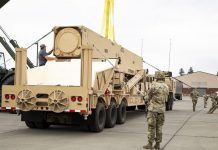Following the new trend in the pandemic, when international air travel has been restricted to control the spread of coronavirus, Thai Airways has also launched its own version of “flight to nowhere”.
Taking in-flight spirituality a notch up, the airline has introduced a one-off flight dubbed the “THAI Magical Flying Experience Campaign” over some of Thailand’s holiest Buddhist religious sites, with passengers reciting mantras along the way.
On 30 November, the three-hour flight will depart from Bangkok and fly over 99 sacred sites, including Wat Arun and the Temple of the Emerald Buddha in Bangkok, Phra Samut Chedi in Samut Prakarn, Wat Phra Boromma That Chaiya in Surat Thani, and the UNESCO-listed heritage sites in Sukhothai and Ayutthaya.
The passengers will be flown over 31 of Thailand’s 77 provinces before returning to the Thai capital.
The flight is intended to fall under the Thai government’s plan to boost domestic tourism in the country, as per Wiwat Piyawiroj, a vice president at Thai Airways.
The idea of “flights to nowhere” was launched by the Australian air carrier, Qantas Airways, which took passengers on a seven-hour flight to see the Outback and the Great Barrier Reef. The tickets sold out in 10 minutes.
India’s government-owned aircraft carrier, Air India, had also planned similar “flights to nowhere,” but nothing was officially announced.
The reports had said that these flights will operate at Minimum Obstacle Clearance Altitude (MOCA), which is the lowest safe level for flying. It allows passengers to see the intended sights, but the MOCA varies from city to city, preventing crashes into buildings and other obstacles.
Earlier in October, hundreds of Taiwanese travelers boarded packed Eva Air flights from Taoyuan International Airport for nowhere. The three-hour-long flight took them on a nighttime loop around Taiwan’s main island, and attendants treated passengers to the holiday’s traditional delicacy: mooncakes.
Hong Kong had also introduced a 75-minute flight, where travelers could snap shots for Instagram from their window seats.
Such flights are not only designed to satisfy people’s desire for normalcy and give customers a sense of escape, but also highlight desperate attempts by airlines to boost sales.
Large parts of the world are still under lockdown to contain the spread of COVID-19, with international airlines remaining closed. Furthermore, due to border closures and quarantine requirements, demand continues to decline.




